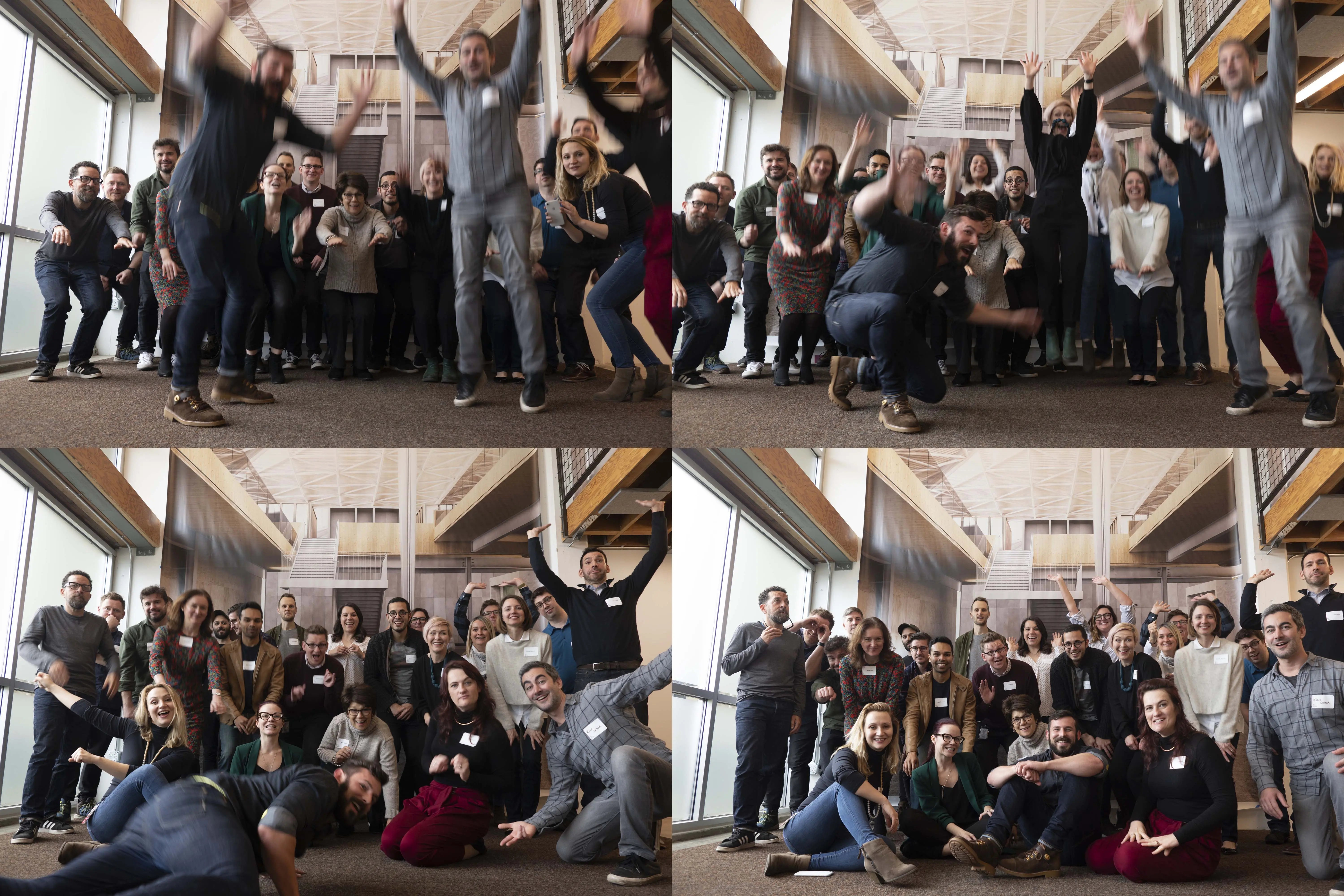
The Workshop
The 2019 Q2 Future Workplace presentation delves into the future of work, focusing on creating adaptive and responsive environments that support human-machine collaboration, well-being, and cognitive ergonomics. It explores the use of design fiction to envision future scenarios, identifying trends such as AI integration, screenless workspaces, and dynamic team formations that will reshape workplace culture and infrastructure. Key themes include ergonomic innovations to accommodate diverse workstyles, the increasing role of AI and data in shaping work experiences, and the need for spaces that support lifelong learning and collaboration. The presentation emphasizes building environments that are not just physical spaces but experiences tailored to evolving cognitive, social, and physical needs, ensuring Googlers thrive in the decades to come. We developed a Design Fiction artifact in the form of a notebook from an employee from the future that captures some of the insights, musings, artifacts/equipment, tools that were discussed in the Design Fiction seminar components of the workshop.
Summary
The 2019 Q2 Future Workplace presentation outlines strategic foresight for designing adaptive, human-machine collaborative work environments that prioritize long-term well-being, cognitive ergonomics, and responsive spaces for the future of work.
Written By: Julian Bleecker
Semantic Tags DESIGN FICTIONWORKWORKPLACEWORKSHOPS
google-rd-future-of-the-workplace-workshopA workshop held over several days over several sessions split out over several months to help Google’s internal workplace design & architecture team (R+D) imagine evolutions of the workplace.
Participation ranged from an active instigator/interlocutor to facilitating discussions and break-out activities to ‘translating’ and capturing many of the discussed concepts and ideas
The 2019 Q2 Future Workplace presentation explores strategic foresight to design workplaces that support long-term success, focusing on creating vibrant, healthy environments for Googlers over the next 100 years. It leverages insights from various experts and diverse research to develop solutions for future challenges. The key areas of investigation include how human-machine teams will operate, ergonomic transformations in response to new technologies, and evolving cognitive, physical, and social work needs.
Key themes covered include:
-
Design Fiction and Future Scenarios: The team used design fiction workshops to envision future workplace scenarios and potential user experiences. These exercises highlighted how workplaces might adapt to new technological and cultural shifts, with narratives grounded in research about Googlers’ current and future needs.
-
Human-Machine Collaboration: Research on human-machine teams pointed to increased collaboration between people and AI or machine-based teammates. This shift requires new spatial configurations and ergonomic innovations to support human and augmented teams. Future work will prioritize real-time feedback, dynamic room configurations, and more responsive spaces that evolve with user demands.
-
Workplace as Experience: The concept of the workplace evolves from being a mere location to an adaptable experience shaped by users’ cognitive and physical needs. The team discussed how work would become a cognitive state unbound by specific locations or times. Work environments will foster well-being, collaboration, and personal growth through technologies such as AI for workflow optimization and adaptive learning spaces.
-
Ten Things Shaping the Future of Work: The presentation summarized the top ten trends impacting the workplace, including the longer lifespan of employees, the ubiquity of data, AI’s growing role in teams, and the shift toward flexible, screenless work environments. Workplaces will increasingly become spaces where people learn and evolve, integrating global connectivity, human-machine interaction, and augmented learning.
-
Ergonomic Evolution: The presentation highlighted that traditional ergonomic setups are becoming obsolete. New forms of working demand innovations in furniture and workspace design, particularly in light of mobile and flexible work arrangements. Biophilia (integration with nature) and improved workspace responsiveness are also central to future office designs.
-
Cognitive and Social Ergonomics: Researchers stressed the need to consider cognitive ergonomics, ensuring workplaces are designed to reduce distractions and support mental health. The future workplace will balance physical, digital, and hybrid interactivity while encouraging social connections and team bonding.